
Hammamet: The Jewel of Tunisia's Coastline
Discover Hammamet: A captivating blend of history, culture, and pristine beaches on Tunisia's stunning Mediterranean coast.
Hammamet is a picturesque coastal town in Tunisia, renowned for its pristine beaches, rich history, and vibrant culture. This charming city offers a perfect blend of relaxation and adventure, making it an ideal destination for all types of travelers. Stroll through the historic Medina, where cobblestone streets are lined with colorful shops selling traditional crafts, spices, and souvenirs. The ancient walls and towers of the Medina provide a glimpse into Hammamet's storied past, while its bustling markets offer a taste of local life. For those seeking sun and sea, Hammamet's beaches are among the best in the Mediterranean. With golden sands and clear, turquoise waters, they are perfect for swimming, sunbathing, and a variety of water sports. Yasmine Hammamet, a modern resort area, adds a touch of luxury with its upscale hotels, marinas, and golf courses. History enthusiasts will appreciate a visit to the Kasbah, a fortress overlooking the harbor, which dates back to the 13th century. The Kasbah offers stunning views of the city and the sea, as well as a fascinating insight into Hammamet's defensive architecture. Nature lovers can explore the nearby Cap Bon peninsula, known for its lush landscapes, vineyards, and citrus groves. A short drive from Hammamet, this area is perfect for hiking, picnicking, and discovering hidden coves and beaches. Hammamet also hosts a variety of cultural events throughout the year, including the renowned International Festival of Hammamet, which features music, dance, and theater performances from around the world.
Local tips in Hammamet
- Visit the Medina early in the morning to avoid the crowds and enjoy a more peaceful experience.
- Wear comfortable shoes as the cobblestone streets in the Medina can be uneven.
- Don't miss the sunset views from the Kasbah for a memorable photo opportunity.
- Try local dishes like 'brik' and 'couscous' at traditional restaurants for an authentic taste of Tunisian cuisine.
- Bargain at the markets, as it is a common practice and can get you great deals on souvenirs.
- Book your accommodation in advance if you plan to visit during the International Festival of Hammamet, as it draws large crowds.
Hammamet: The Jewel of Tunisia's Coastline
Hammamet is a picturesque coastal town in Tunisia, renowned for its pristine beaches, rich history, and vibrant culture. This charming city offers a perfect blend of relaxation and adventure, making it an ideal destination for all types of travelers. Stroll through the historic Medina, where cobblestone streets are lined with colorful shops selling traditional crafts, spices, and souvenirs. The ancient walls and towers of the Medina provide a glimpse into Hammamet's storied past, while its bustling markets offer a taste of local life. For those seeking sun and sea, Hammamet's beaches are among the best in the Mediterranean. With golden sands and clear, turquoise waters, they are perfect for swimming, sunbathing, and a variety of water sports. Yasmine Hammamet, a modern resort area, adds a touch of luxury with its upscale hotels, marinas, and golf courses. History enthusiasts will appreciate a visit to the Kasbah, a fortress overlooking the harbor, which dates back to the 13th century. The Kasbah offers stunning views of the city and the sea, as well as a fascinating insight into Hammamet's defensive architecture. Nature lovers can explore the nearby Cap Bon peninsula, known for its lush landscapes, vineyards, and citrus groves. A short drive from Hammamet, this area is perfect for hiking, picnicking, and discovering hidden coves and beaches. Hammamet also hosts a variety of cultural events throughout the year, including the renowned International Festival of Hammamet, which features music, dance, and theater performances from around the world.
When is the best time to go to Hammamet?
Iconic landmarks you can’t miss
Carthageland
Experience the thrills and cultural wonders of Carthageland, the ultimate amusement park in Yasmine Hammamet, Tunisia, for all ages.
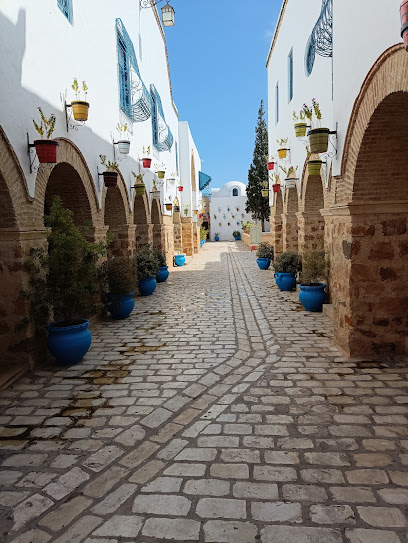
Marina Yasmine Hammamet
Experience the enchanting Marina Yasmine Hammamet, where stunning views, delightful dining, and thrilling activities await every visitor.
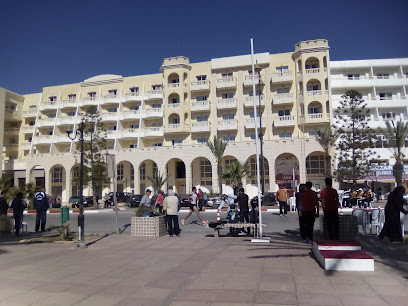
Fort Hammamet
Experience the enchanting history and breathtaking views at Fort Hammamet, a stunning historical site on Tunisia's captivating coastline.
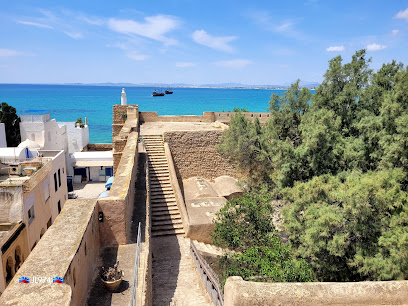
Le Petit Pêcheur 2 Hammamet
Experience authentic Tunisian cuisine at Le Petit Pêcheur 2 in Hammamet, where every meal tells a story of rich flavors and warm hospitality.
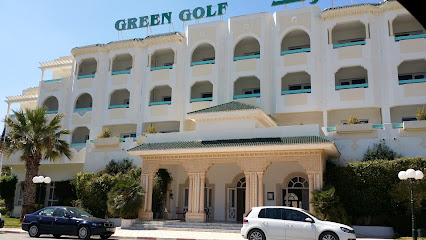
Medina of Yasmine Hammamet
Experience the vibrant culture and stunning architecture of the Medina of Yasmine Hammamet, a perfect blend of tradition and modernity.
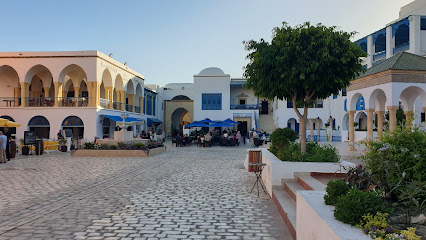
Kasbah
Explore the historic Kasbah of Hammamet, where rich culture meets stunning Mediterranean views in a captivating local history museum.
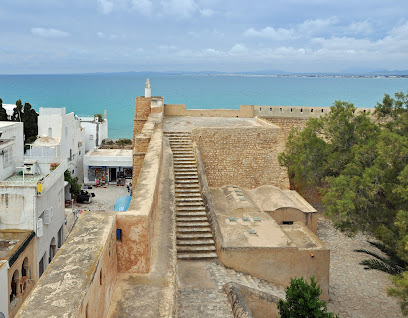
La Sirène
Experience the vibrant atmosphere and stunning views at La Sirène, Hammamet's premier coffee shop and restaurant for every traveler.
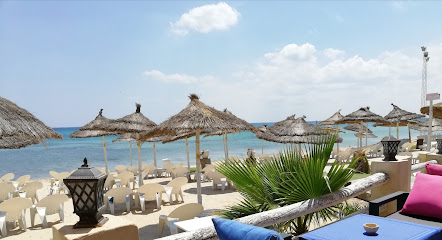
Canari Hammamet
Discover the cozy charm of Canari Hammamet, a delightful café offering a taste of local culture and exquisite beverages in the heart of Tunisia.
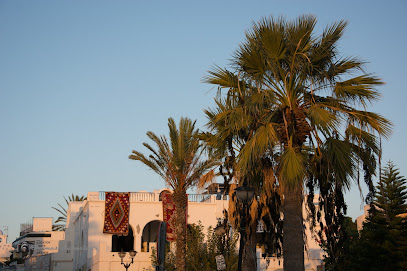
MG City
Explore the vibrant MG City supermarket in Hammamet for a taste of local flavors and products in an inviting atmosphere.
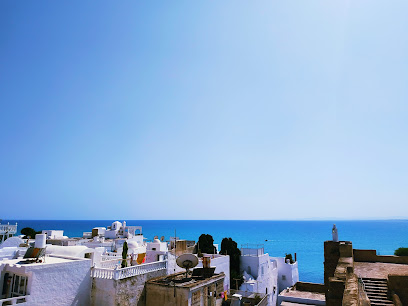
Pupput
Discover the rich history and stunning mosaics of Pupput, an ancient Roman site in Yasmine Hammamet, Tunisia.
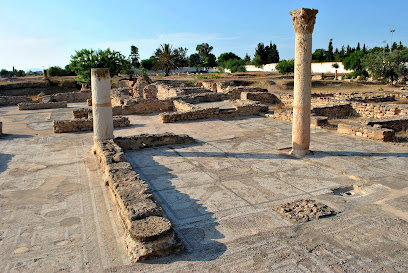
Plage Hammamet
Experience the serene beauty and vibrant culture of Plage Hammamet, Tunisia's premier beach pavilion, perfect for relaxation and adventure.
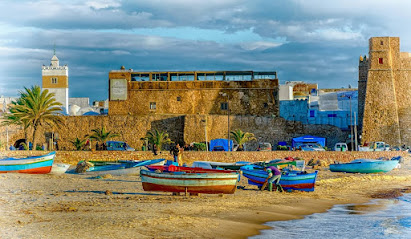
Club Equus Hammamet
Experience the beauty of equestrian culture at Club Equus Hammamet, a premier pony club surrounded by nature's tranquility.
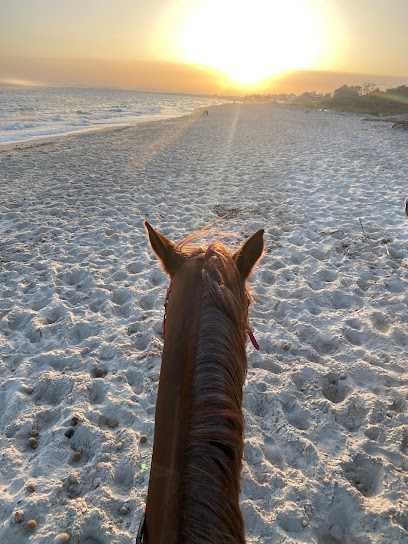
Salma evasion quad
Discover the thrill of quad biking at Salma Evasion Quad in Yasmine Hammamet – an adventure-filled recreation center for all ages.
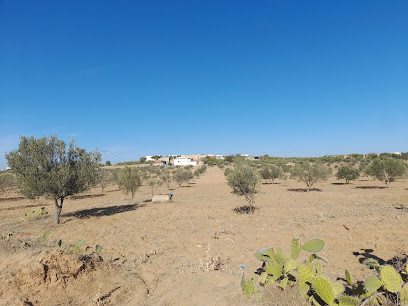
Port Yasmine
Discover Port Yasmine, Hammamet's premier shopping mall, where shopping meets Mediterranean charm and culinary delights await.
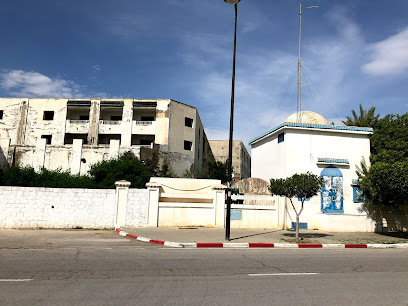
Hammamet beach
Explore the beauty of Hammamet Beach, Tunisia's coastal paradise with golden sands, crystal-clear waters, and vibrant local culture.
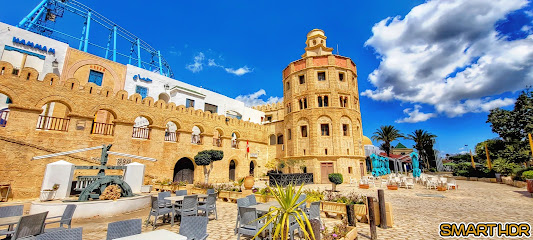
Unmissable attractions to see
The Water Temple
Experience the captivating beauty of The Water Temple in Tunis, a historical landmark that combines stunning architecture, serene landscapes, and rich cultural heritage.
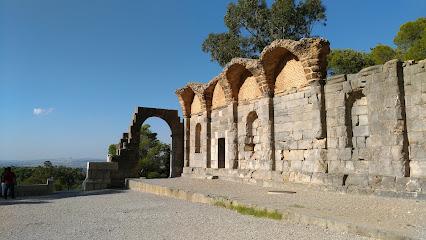
Hammamet Pirate Ship
Discover the magic of the Mediterranean on the Hammamet Pirate Ship - an adventure of fun, entertainment, and stunning coastal views.
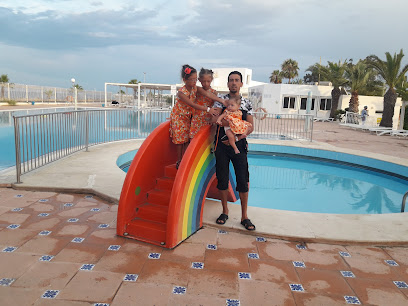
The Archaeological Site of Uthina
Uncover the ancient mysteries of the Archaeological Site of Uthina, a captivating journey into Tunisia's Roman past amidst stunning ruins and serene landscapes.
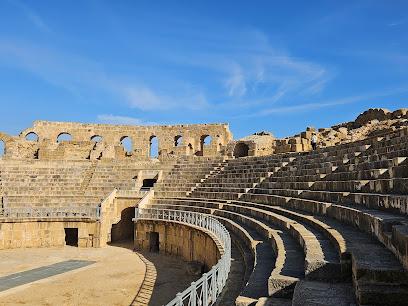
Kasbah
Discover the enchanting Kasbah in Hammamet, a historical gem showcasing Tunisia's rich culture and breathtaking Mediterranean views.

Golf Citrus- Les Oliviers Course
Experience golfing like never before at Golf Citrus in Hammamet Sud, where stunning landscapes meet exceptional play in Tunisia's finest destination.
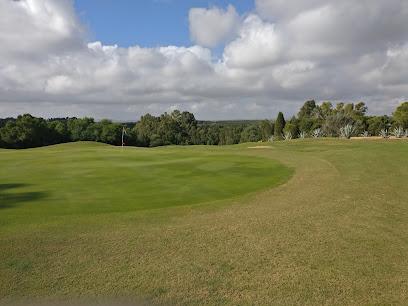
Pupput
Experience the charm of Pupput, an archaeological site in Yasmine Hammamet, where ancient history meets stunning Mediterranean views.
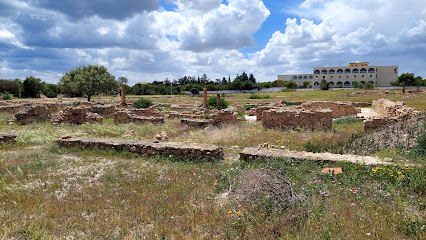
Club Equus Hammamet
Explore the serene beauty and equestrian adventures at Club Equus Hammamet, a top destination for horse lovers and families in Tunisia.
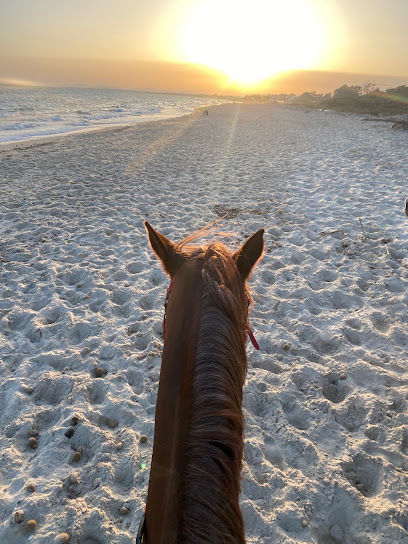
Plage de Hammamet
Experience the tranquility and beauty of Plage de Hammamet, a stunning beach destination in Tunisia that blends relaxation with vibrant local culture.
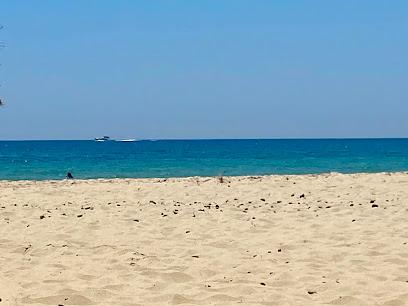
Jobi Beach Hammamet
Discover the tranquil beauty of Jobi Beach in Hammamet, a perfect getaway for relaxation, adventure, and vibrant local culture.

Golf Braü
Discover the perfect blend of leisure and recreation at Golf Braü, Hammamet's premier lounge and golfing destination.

Palais des 1001 nuits
Explore the rich tapestry of Tunisian culture at Palais des 1001 Nuits, a museum showcasing stunning reproductions of iconic art.
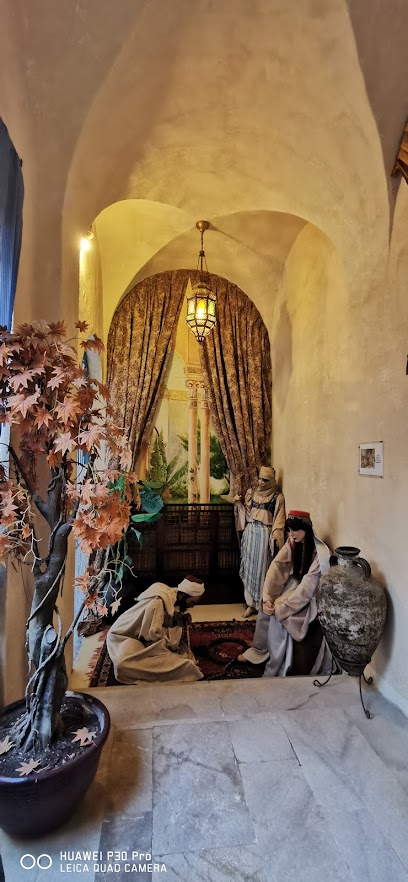
Port Yasmine Hammamet
Experience the enchanting charm of Port Yasmine Hammamet, a coastal gem in Tunisia with stunning beaches, vibrant markets, and rich cultural heritage.
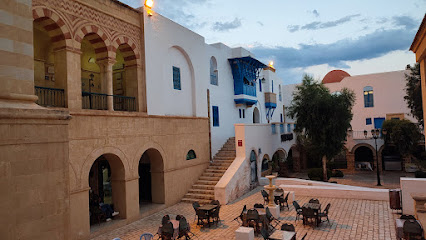
Plage
Discover the beauty of Plage in Hammamet, a coastal paradise with golden sands, thrilling activities, and vibrant nightlife.
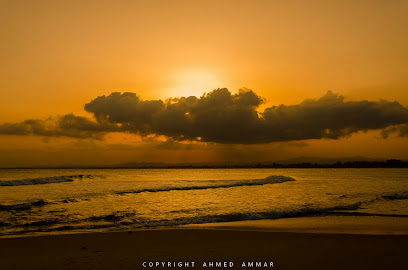
Musée Dar khadija Hammamet
Explore the rich cultural heritage of Tunisia at Musée Dar Khadija in Hammamet, where art and history intertwine for a unique visitor experience.
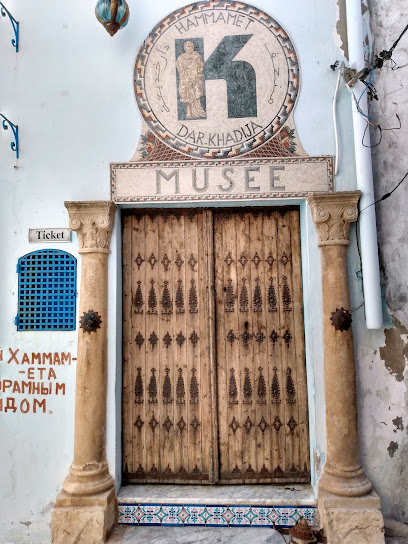
Hammamet Bledi
Experience the serene beauty and cultural richness of Hammamet Bledi, a stunning tourist attraction in Tunisia's vibrant coastal town.
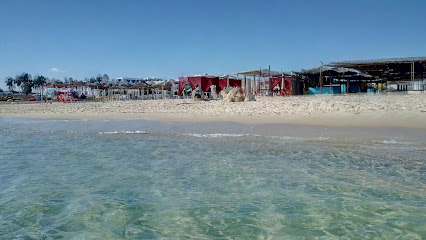
Essential places to dine
Le Petit Pêcheur 2 Hammamet
Experience authentic Tunisian cuisine at Le Petit Pêcheur in Hammamet - where fresh seafood meets traditional flavors in a cozy atmosphere.
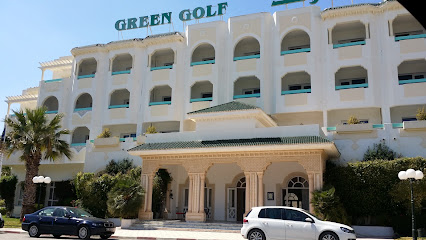
LA RAMBLA
Discover La Rambla: A vibrant promenade in Hammamet where culinary delights meet local culture amidst stunning scenery.
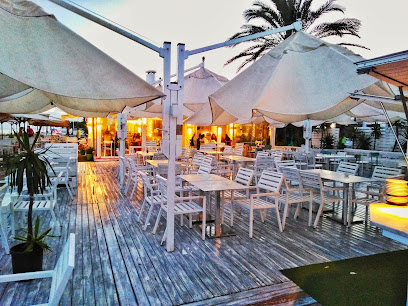
Le Barberousse
Discover exquisite seafood and authentic Tunisian cuisine at Le Barberousse in Hammamet, where stunning Mediterranean views enhance your dining experience.
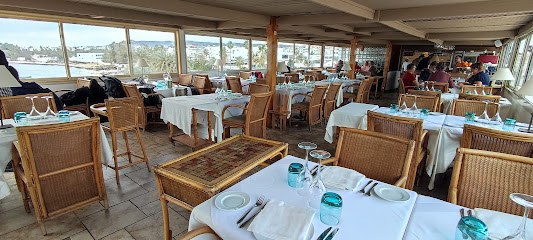
Liberation restaurant
Experience authentic Tunisian cuisine at Liberation Restaurant in Hammamet - where every dish tells a story of flavor and tradition.
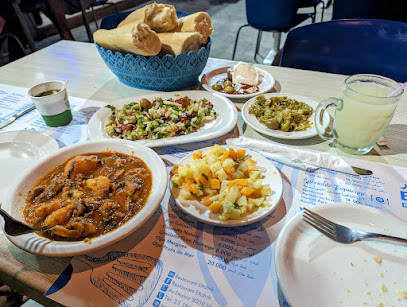
Barberousse Beach Club
Experience culinary delights at Barberousse Beach Club in Yasmine Hammamet – where exquisite flavors meet breathtaking Mediterranean views.
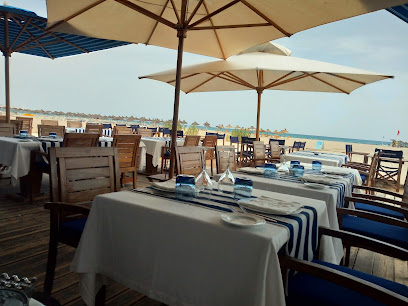
Yuman
Discover Yuman in Hammamet: Experience authentic Tunisian cuisine with fresh local ingredients in a warm and inviting atmosphere.
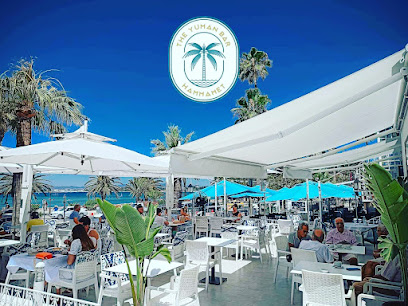
petit pêcheur 1 hammamet
Discover authentic Tunisian flavors at Le Petit Pêcheur in Hammamet – a seafood lover's paradise by the coast.

Bel Canto Hammamet
Experience exquisite Mediterranean dining at Bel Canto Hammamet with stunning sea views and exceptional service in Tunisia.

La Bella Marina
Experience the vibrant flavors of Mediterranean cuisine at La Bella Marina in Hammamet Sud – where every meal is a celebration.
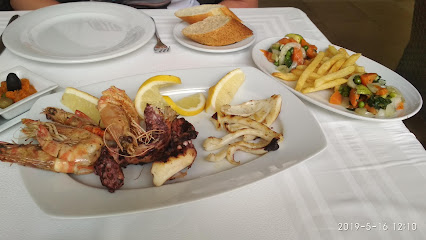
La Sirène
Experience authentic Tunisian flavors at La Sirène in Hammamet – where every meal tells a story.
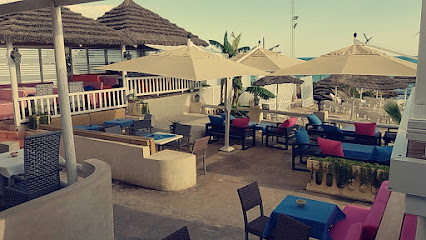
Restaurant La Luna. Pizzeria...four a bois
Savor authentic wood-fired pizzas and Italian cuisine at Restaurant La Luna in Hammamet – where flavor meets tradition!
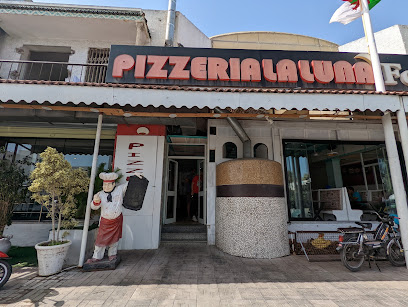
Restaurant Da Franco
Experience authentic Italian cuisine at Restaurant Da Franco in Hammamet Sud - where flavor meets tradition.
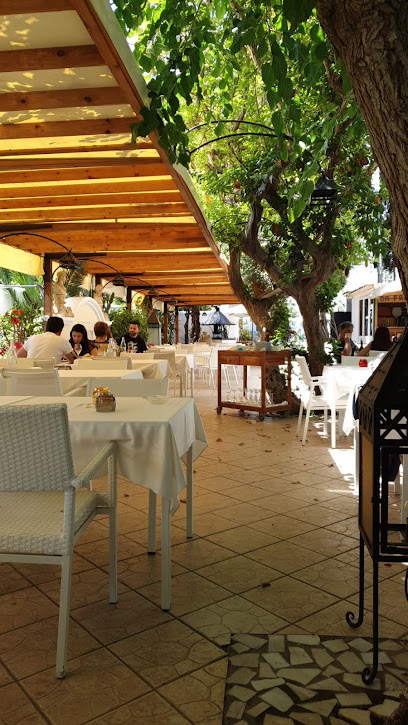
Restaurant lella Fatma
Discover the flavors of Tunisia at Restaurant Lella Fatma in Hammamet - a culinary journey through authentic local cuisine.
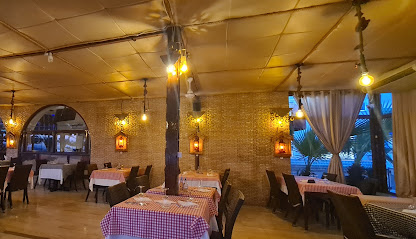
Resto La Plage Hammamet
Experience exquisite dining at Resto La Plage Hammamet, where local flavors meet breathtaking Mediterranean views for an unforgettable meal.
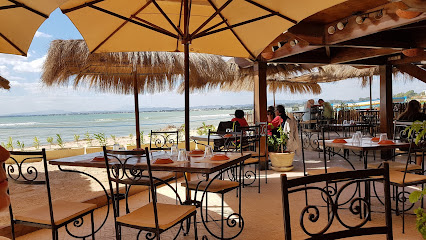
Berber Soul
Discover the elegance of haute French cuisine at Berber Soul in Hammamet – where local flavors meet gourmet artistry.
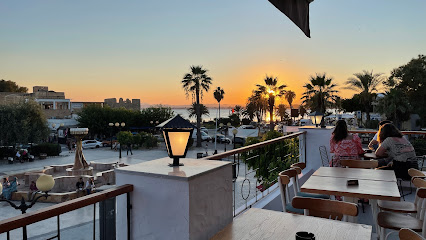
Markets, malls and hidden boutiques
Medina shop
Discover unique Tunisian crafts and souvenirs at the Medina Shop, a vibrant shopping destination in the heart of Hammamet.
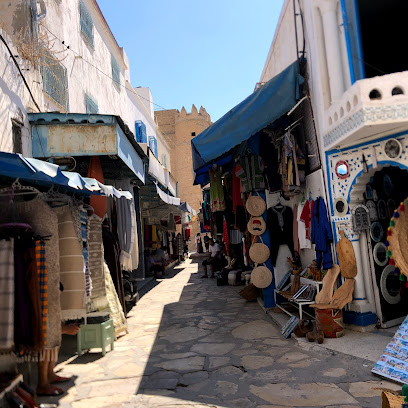
Shoes Center
Explore Shoes Center in Hammamet for a diverse selection of stylish and comfortable footwear that captures the essence of local and international fashion.
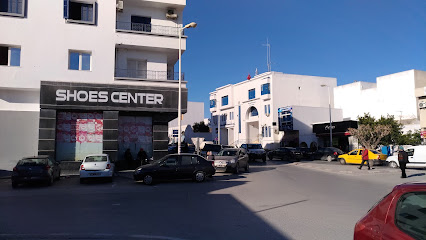
Dragon Vape Store Hammamet
Discover the vibrant vaping culture at Dragon Vape Store Hammamet, offering a wide range of products in a welcoming environment.

ZEN HAMMAMET
Explore stylish fashion at Zen Hammamet, a must-visit clothing store in Tunisia for trendy outfits and local craftsmanship.

zitouna shop hammamet
Explore Zitouna Shop in Hammamet for unique gifts, local crafts, and trendy accessories that capture the spirit of Tunisia.

K & k £'art des cadeaux
Explore K & K £'art des cadeaux in Hammamet for unique Tunisian gifts and souvenirs that embody the rich cultural heritage of Tunisia.
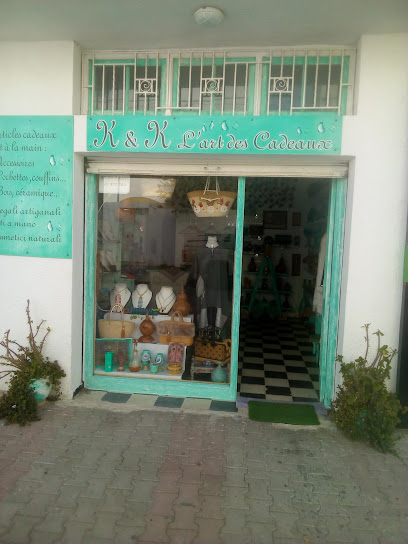
Carthage Galerie
Explore Carthage Galerie in Hammamet for a unique selection of authentic Tunisian crafts and souvenirs that capture the spirit of Tunisia.
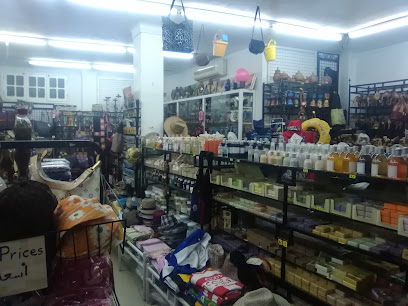
Secret parfums سر العطور
Experience the captivating world of scents at Secret Parfums in Hammamet, where tradition meets luxury in every bottle.
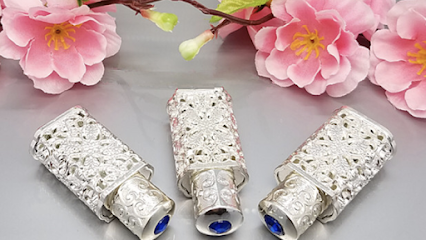
FOULARA Hammamet
Explore the elegance of women's fashion at Foulara Hammamet, where Tunisian craftsmanship meets contemporary style.
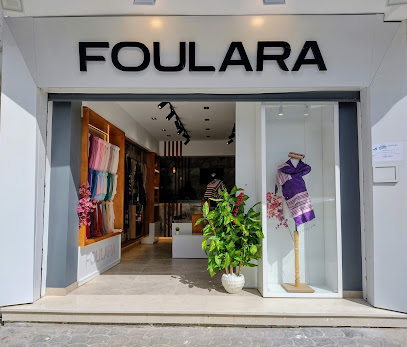
DECORIS Hammamet
Explore DECORIS Hammamet: A treasure trove of handcrafted gifts and local art reflecting Tunisia's vibrant culture.
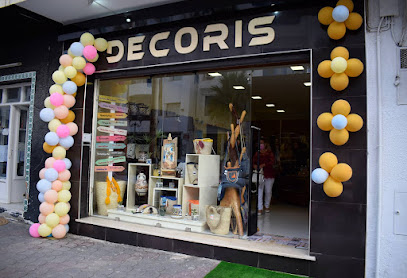
Boutique Sympatico
Discover the latest in women's fashion at Boutique Sympatico in Hammamet, where style meets elegance in a charming shopping experience.

Boutique Julia
Discover stylish apparel at Boutique Julia in Hammamet, where local charm meets modern fashion in a delightful shopping experience.
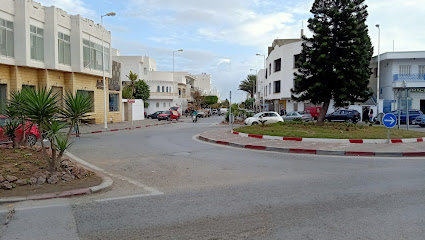
ZPhone Hammamet
Explore the latest in electronics at ZPhone Hammamet, your ultimate smart shop for all tech needs while traveling in Tunisia.
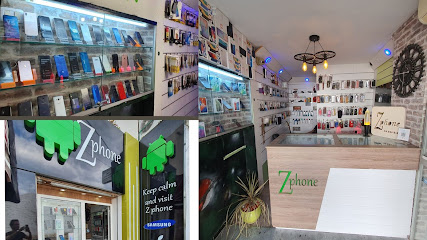
Boutique AZIZ
Explore unique fashion at Boutique AZIZ in Hammamet, showcasing local craftsmanship and stylish selections for every occasion.

Au fil de l’art
Explore the artistic spirit of Tunisia at Au fil de l’art, a charming gift shop in Hammamet filled with unique handcrafted treasures.
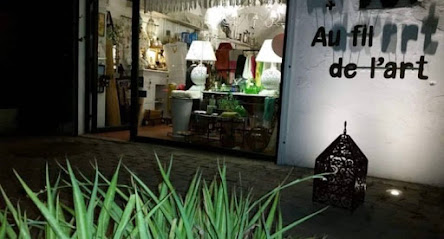
Essential bars & hidden hideouts
LA RAMBLA
Experience the vibrant culinary scene at La Rambla in Hammamet, where local flavors meet a lively atmosphere amidst stunning surroundings.
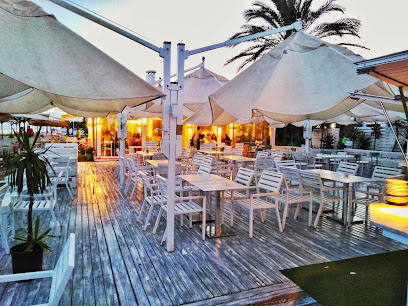
Le Barberousse
Discover the flavors of Tunisia at Le Barberousse, a charming restaurant in Hammamet overlooking the Mediterranean.
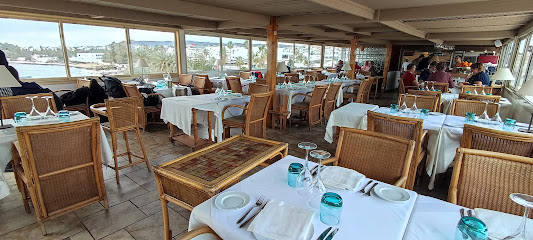
Bel Canto Hammamet
Discover authentic Tunisian cuisine at Bel Canto Hammamet, where culinary tradition meets modern elegance in a stunning coastal setting.
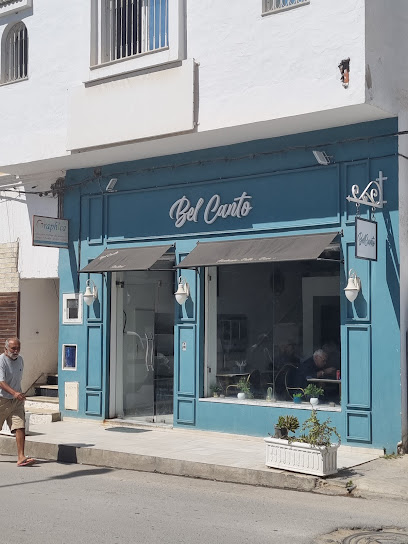
Resto La Plage Hammamet
Discover the flavors of Tunisia at Resto La Plage Hammamet, where stunning sea views meet exceptional local cuisine for a truly unforgettable dining experience.

Movida Club Ristorante
Experience the vibrant flavors of Tunisia at Movida Club Ristorante, a culinary gem in the heart of Hammamet, offering exquisite local and Mediterranean dishes.
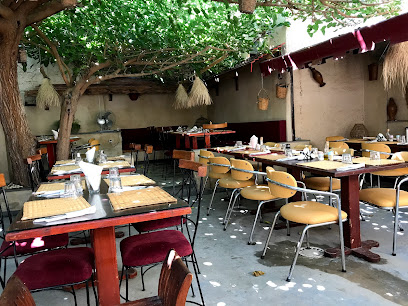
Pupput le bar
Experience the vibrant nightlife at Pupput le bar in Hammamet, where delicious cocktails, live music, and exquisite dining await.
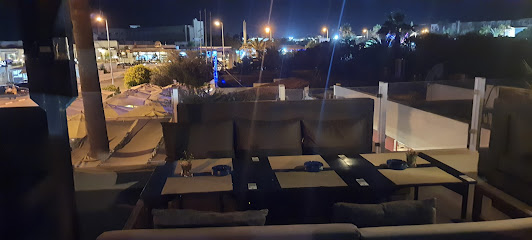
marco polo hammamet
Experience the Best of Tunisian Wine Culture at Marco Polo Hammamet – A Cozy Wine Bar with Stunning Views.
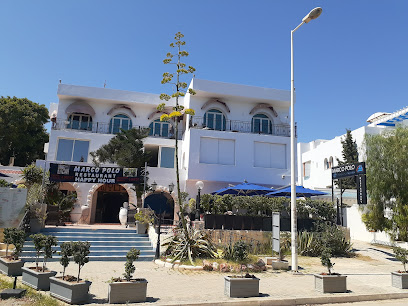
BEER GARDEN BRASSERIE
Discover Beer Garden Brasserie in Yasmine Hammamet: where local flavors meet international cuisine in a vibrant, welcoming atmosphere.
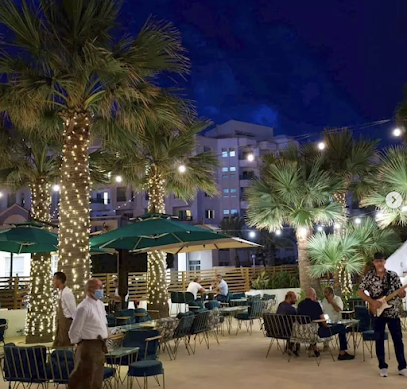
Cozy Bar
Experience the relaxing ambiance of the Cozy Bar in Yasmine Hammamet, where local charm meets delightful nightlife for an unforgettable evening.
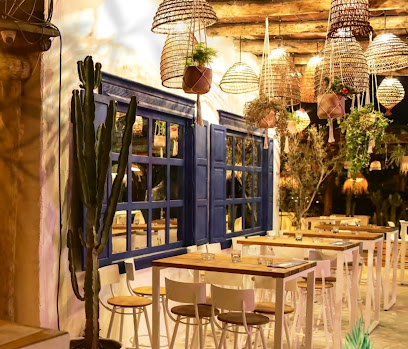
El Pacha Club
Experience the vibrant nightlife at El Pacha Club in Hammamet, where delicious dining meets electrifying dance and entertainment.
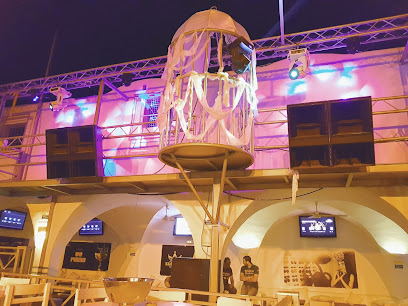
The Famous resto lounge
Experience the vibrant nightlife at The Famous Resto Lounge in Hammamet, where delicious drinks and a lively atmosphere await every visitor.
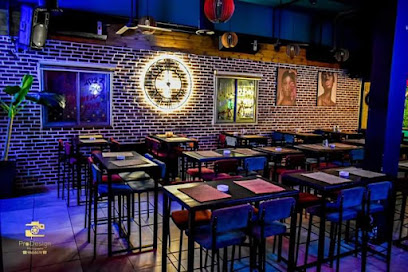
Le bazar à tapas hammamet
Experience the vibrant spirit of Spain at Le Bazar à Tapas Hammamet, where every bite tells a story of culinary delight.
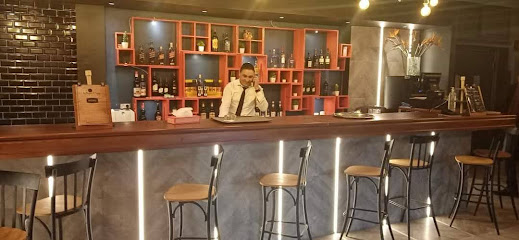
Malibu Pub hammamet
Discover the vibrant ambiance of Malibu Pub in Hammamet, where relaxation meets entertainment in a stylish lounge setting.
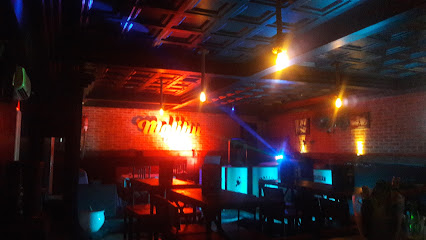
The Club Bar Lounge
Enjoy vibrant nightlife and delicious cocktails at The Club Bar Lounge in Hammamet, Tunisia's premier destination for evening entertainment.

Bar Nassim
Discover Bar Nassim in Hammamet, where relaxation meets local charm amidst stunning Mediterranean views.
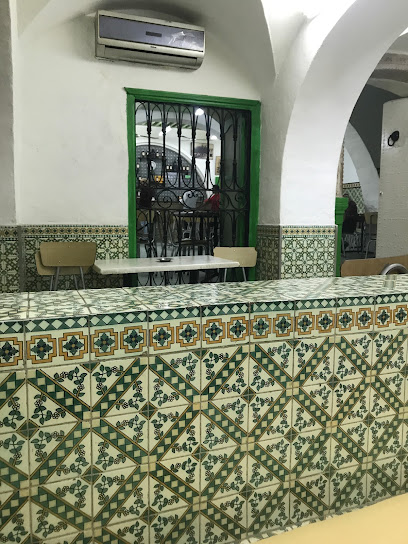
Local Phrases
-
- Helloمرحبا
[marhaba] - Goodbyeوداعا
[wada'an] - Yesنعم
[naam] - Noلا
[la] - Please/You're welcomeمن فضلك
[min fadlik] - Thank youشكرا
[shukran] - Excuse me/Sorryعذرا
[aatharana] - How are you?كيف حالك؟
[kayfa haluk?] - Fine. And you?بخير. وأنت؟
[bikhayr. wa'ant?] - Do you speak English?هل تتحدث الإنجليزية؟
[hal tatahadath al'injlizia?] - I don't understandأنا لا أفهم
[ana la afham]
- Helloمرحبا
-
- I'd like to see the menu, pleaseأريد أن أرى القائمة، من فضلك
[uridu an ara alqaimah, min fadlik] - I don't eat meatأنا لا آكل اللحوم
[ana la aakul al'lhuum] - Cheers!في صحتك!
[fi sahtik!] - I would like to pay, pleaseأود أن أدفع، من فضلك
[awadu an adfaa, min fadlik]
- I'd like to see the menu, pleaseأريد أن أرى القائمة، من فضلك
-
- Help!النجدة!
[alnajdah!] - Go away!اذهب بعيدا!
[idhab baedan!] - Call the Police!اتصل بالشرطة!
[itsal bialshurta!] - Call a doctor!اتصل بطبيب!
[itsal batabib!] - I'm lostلقد ضللت
[laqad dalalt] - I'm illأنا مريض
[ana mareed]
- Help!النجدة!
-
- I'd like to buy...أريد أن أشتري...
[uridu an ashtari...] - I'm just lookingأنا فقط أتطلع
[ana faqat atatlau] - How much is it?بكم هذا؟
[bikam hadha?] - That's too expensiveهذا غالي جدا
[hadha ghaali jiddan] - Can you lower the price?هل يمكنك تخفيض السعر؟
[hal yumkinuka takhfid alsu'r?]
- I'd like to buy...أريد أن أشتري...
-
- What time is it?كم الساعة؟
[kam alsaa'ah?] - It's one o'clockالواحدة
[alwahidah] - Half past (10)العاشرة و النصف
[al'ashirah wa alnusf] - Morningالصباح
[alsabah] - Afternoonالظهيرة
[aldhuhr] - Eveningالمساء
[almasa'] - Yesterdayأمس
[ams] - Todayاليوم
[alyawm] - Tomorrowغدا
[ghadan] - 1واحد
[wahid] - 2اثنان
[ithnan] - 3ثلاثة
[thlatha] - 4أربعة
[arba'a] - 5خمسة
[khamsa] - 6ستة
[sitta] - 7سبعة
[sab'a] - 8ثمانية
[thamania] - 9تسعة
[tisa'a] - 10عشرة
[ashara]
- What time is it?كم الساعة؟
-
- Where's a/the...?أين...
[ayn...] - What's the address?ما هو العنوان؟
[ma huwa al'unnwan?] - Can you show me (on the map)?هل يمكنك أن تريني (على الخريطة)؟
[hal yumkinuka an tureeni (ala alkharytah)?] - When's the next (bus)?متى الحافلة التالية؟
[mata alhaflah altalyah?] - A ticket (to ....)تذكرة (إلى...)
[tazkirah (ila...)]
- Where's a/the...?أين...
History of Hammamet
-
Hammamet, initially known as 'Pupput,' was first settled by the Phoenicians around the 5th century BC. The city later came under Roman control, becoming an important commercial and agricultural center. The remains of Roman villas, baths, and aqueducts in and around Hammamet bear testament to this period of prosperity.
-
With the advent of Islam in the 7th century, Hammamet saw significant cultural and architectural changes. The construction of the Great Mosque and the Hammamet Kasbah, both of which date back to this period, marked the city's transformation into a fortified Islamic town. These structures remain key historical landmarks.
-
In the 16th century, Hammamet fell under Ottoman rule. The Ottomans reinforced the city’s fortifications and further developed its maritime defenses. The influence of Ottoman architecture and culture is evident in the city’s traditional houses and public buildings, many of which feature distinctive arched doorways and ornate tile work.
-
The French colonization of Tunisia in the late 19th and early 20th centuries left a lasting impact on Hammamet. The city became a popular retreat for French artists, writers, and intellectuals. The establishment of the luxurious George Sebastian Villa in the 1920s, which hosted many prominent figures, exemplifies this influence.
-
Following Tunisia’s independence in 1956, Hammamet experienced significant growth and modernization. The development of tourism infrastructure, including hotels, resorts, and cultural centers, transformed Hammamet into a premier tourist destination. This period also saw the preservation and restoration of historical sites, blending the city’s rich heritage with modern amenities.
-
Hammamet is renowned for its vibrant cultural scene. The International Festival of Hammamet, held annually since 1964, showcases a diverse range of music, theater, and dance performances. The city’s medina, with its narrow streets, bustling souks, and historical landmarks, remains a living museum of Tunisian culture and traditions.
Hammamet Essentials
-
Hammamet is located on the southeast coast of the Cap Bon Peninsula in Tunisia. The nearest international airport is Enfidha-Hammamet International Airport, approximately 40 kilometers away. From the airport, you can take a taxi or pre-arranged shuttle to Hammamet. Alternatively, Tunis-Carthage International Airport, around 70 kilometers away, offers more extensive international connections. From Tunis, you can reach Hammamet by taxi, rental car, or train. The train journey from Tunis to Hammamet takes about 1.5 hours.
-
In Hammamet, taxis and local buses are the primary means of transportation. Taxis are relatively inexpensive and can be hailed on the street or booked via phone. Make sure to agree on a fare or ensure the meter is running to avoid misunderstandings. Public buses and minibuses (louages) offer affordable travel options within the city and to nearby towns. For more flexibility, renting a car is a viable option, with several rental agencies available in Hammamet.
-
The official currency in Tunisia is the Tunisian Dinar (TND). Credit cards are widely accepted in hotels, restaurants, and larger shops, but it is advisable to carry cash, especially for smaller establishments and markets. ATMs are readily available throughout Hammamet. Ensure you have some dinars upon arrival, as foreign currency exchanges might not always be immediately accessible.
-
Hammamet is generally safe for tourists, but it is advisable to take standard precautions. Avoid isolated areas, especially at night, and keep an eye on your belongings in crowded places. The Medina area, while charming and historic, can attract pickpockets, so remain vigilant. Avoid flashing valuables and be cautious of overly friendly strangers offering unsolicited help.
-
In case of an emergency, dial 197 for police assistance, 190 for medical emergencies, and 198 for fire services. It is recommended to have travel insurance that covers medical emergencies. Hammamet has several medical facilities and pharmacies where you can get assistance and purchase over-the-counter medications. The main hospital in the area is the Centre Hospitalier Universitaire Tahar Sfar.
-
Fashion: Do dress modestly, especially when visiting religious sites. Avoid wearing overly revealing clothing. Religion: Do respect local customs and traditions. Women should cover their heads when entering mosques. Public Transport: Do be courteous and give up your seat to elderly passengers. Don’t eat or drink on public transport. Greetings: Do greet people with a handshake or a slight bow. Men should wait for women to extend their hand first. Eating & Drinking: Do try local dishes and accept food offerings graciously. Don’t refuse hospitality, as it is considered impolite.
-
To experience Hammamet like a local, visit the bustling Medina, where you can buy local crafts and souvenirs. Take a stroll along the beach promenade at sunset for a picturesque view. Engage with locals, who are often friendly and willing to share stories about the town's history and culture. Don’t miss visiting the Hammamet Fort and the International Cultural Centre, which offer insights into the region's rich heritage. For a unique experience, try a traditional hammam (bathhouse) to relax and rejuvenate.
Nearby Cities to Hammamet
-
Things To Do in Tunis
-
Things To Do in Sousse
-
Things To Do in Monastir
-
Things To Do in Bizerte
-
Things To Do in Sfax
-
Things To Do in Annaba
-
Things To Do in Djerba
-
Things To Do in Palermo
-
Things To Do in Xlendi
-
Things To Do in Marsalforn
-
Things To Do in Gozo
-
Things To Do in Xaghra
-
Things To Do in Xewkija
-
Things To Do in Mellieha
-
Things To Do in Mgarr











